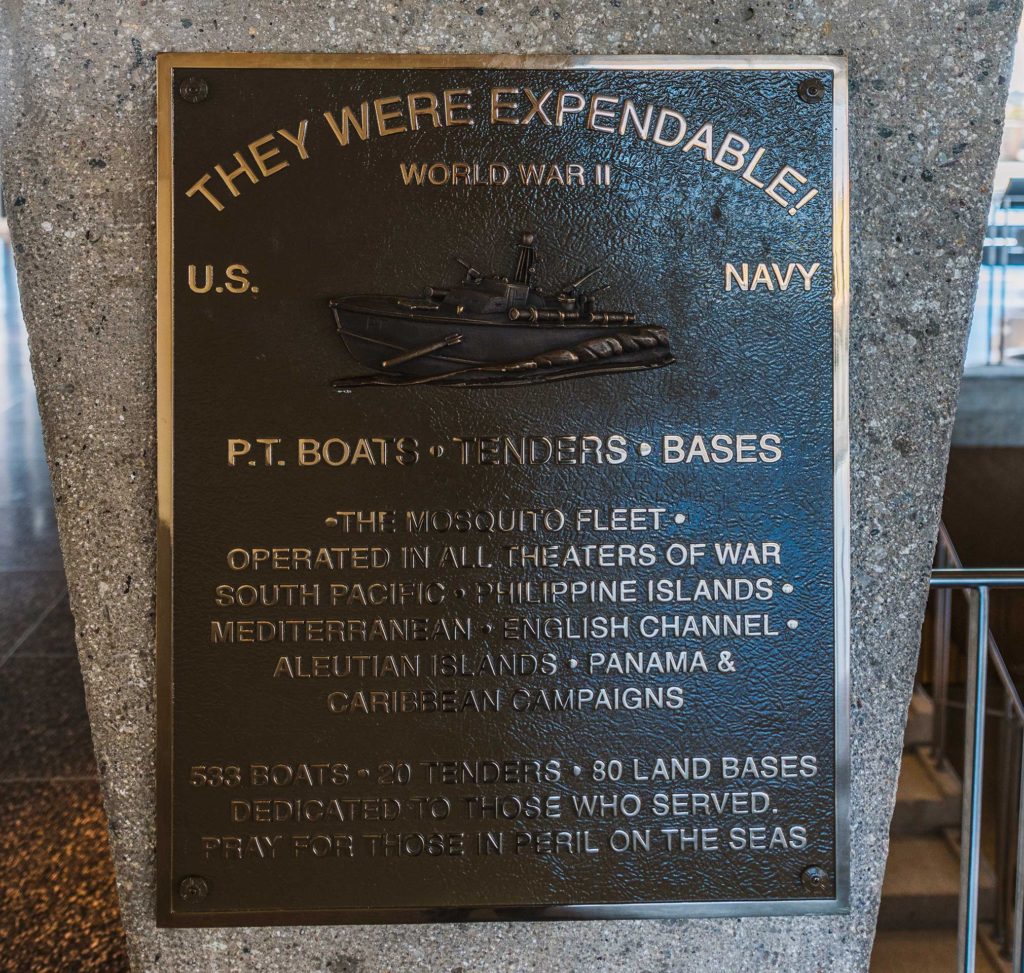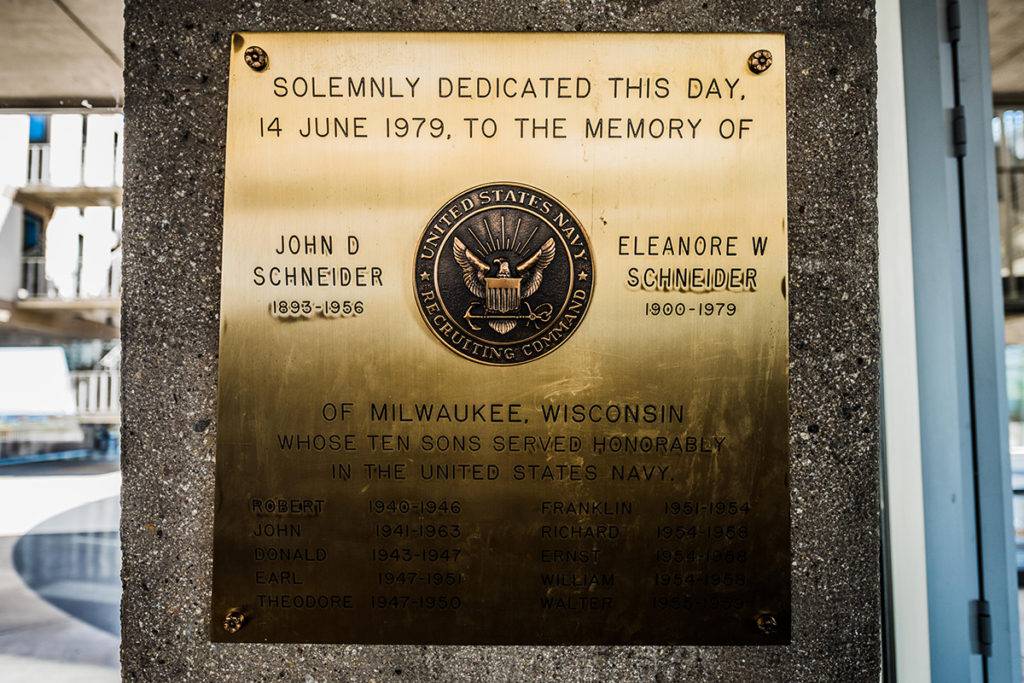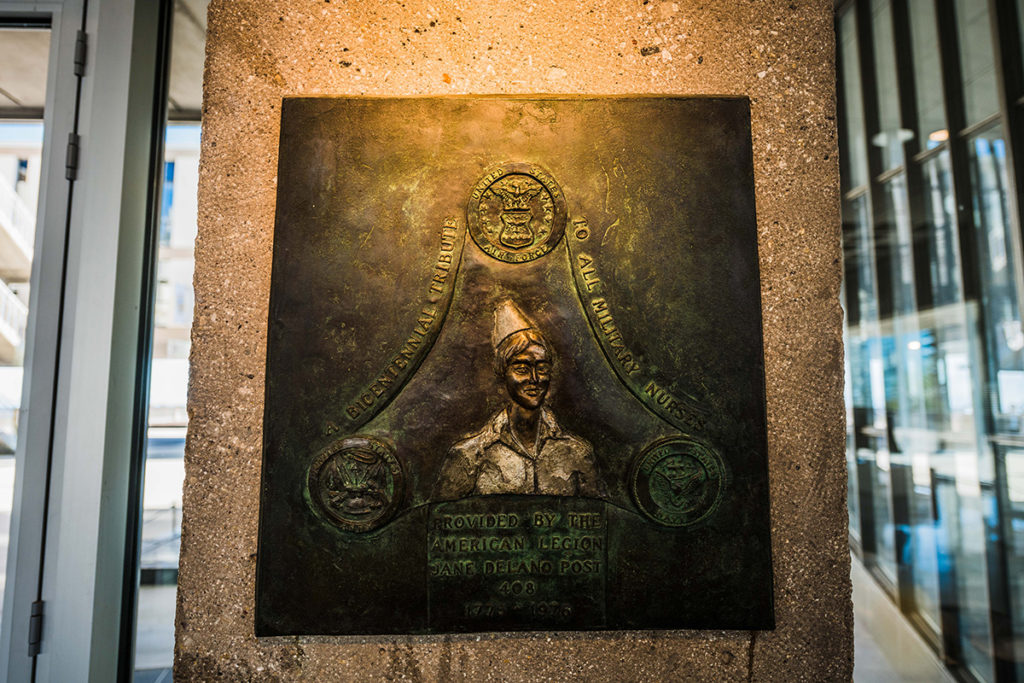
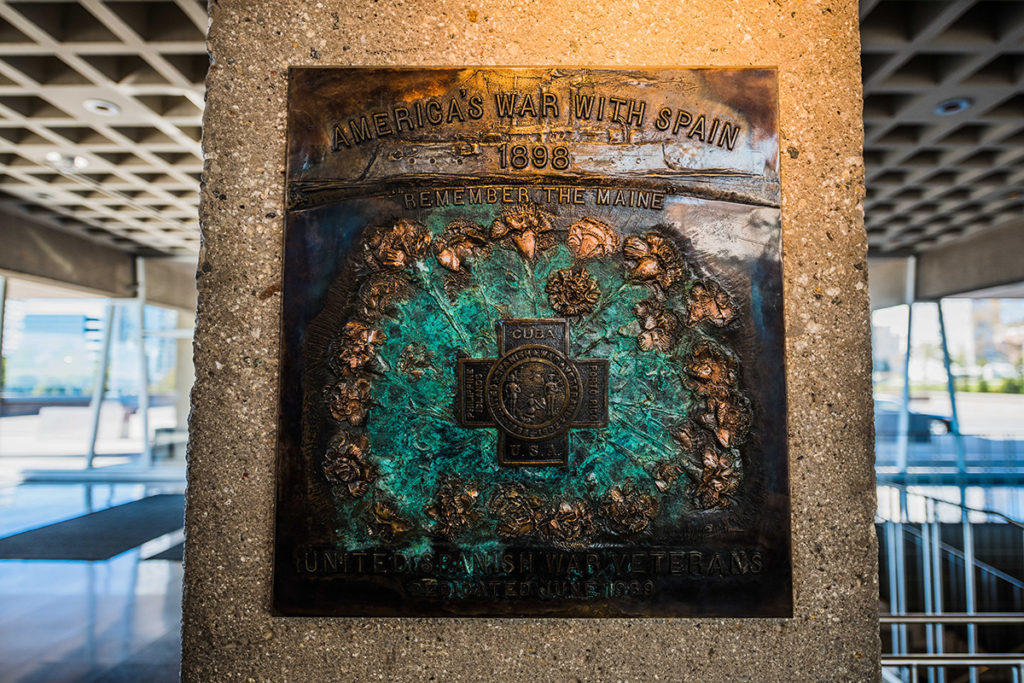
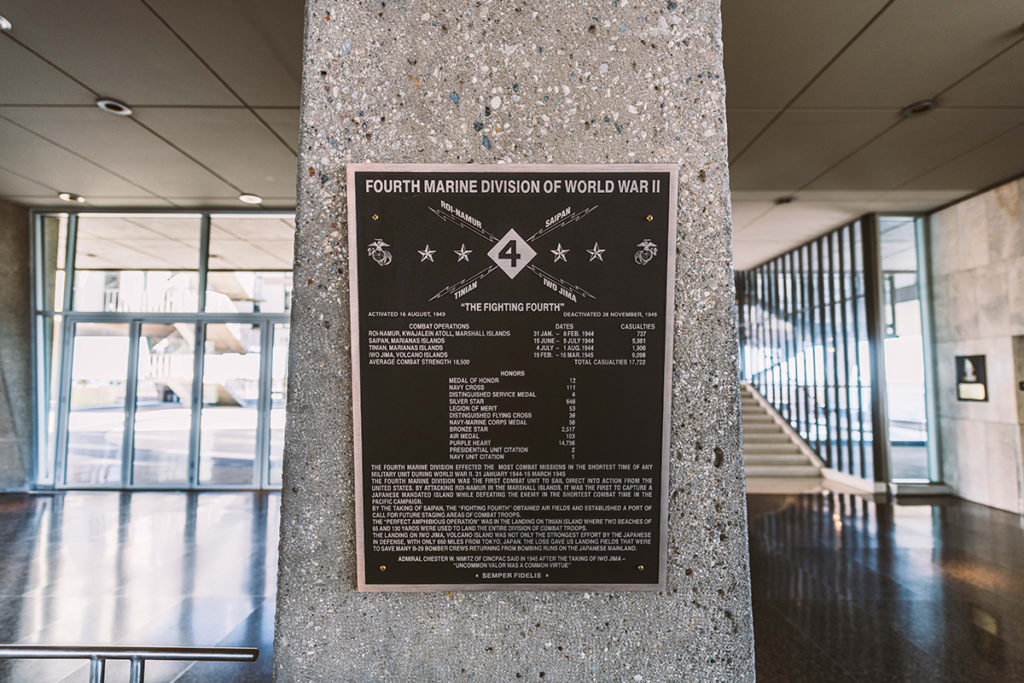
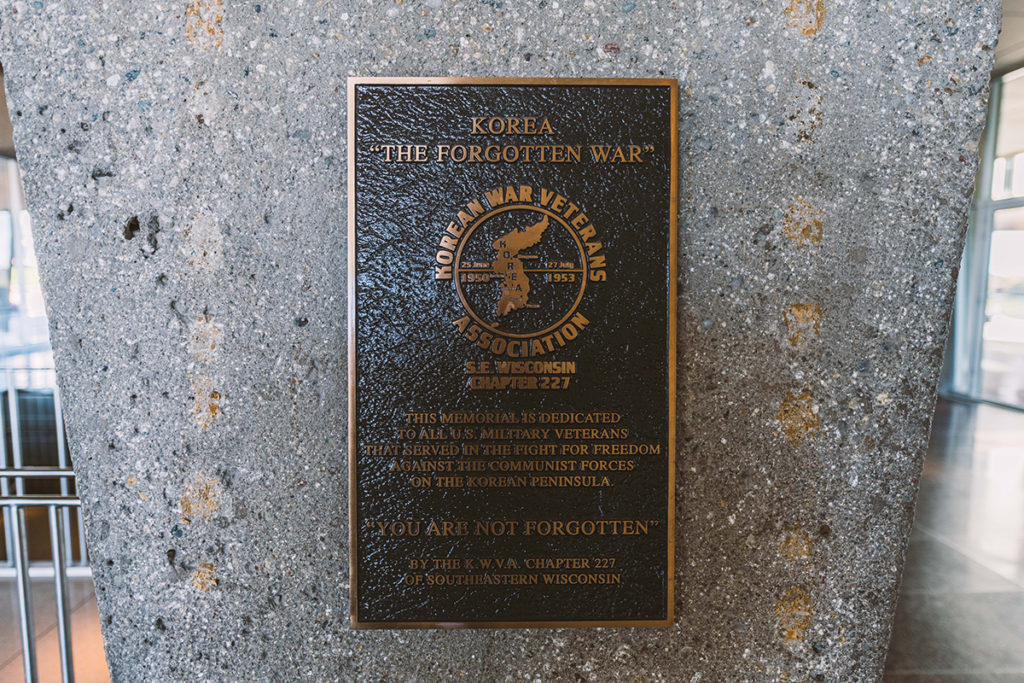

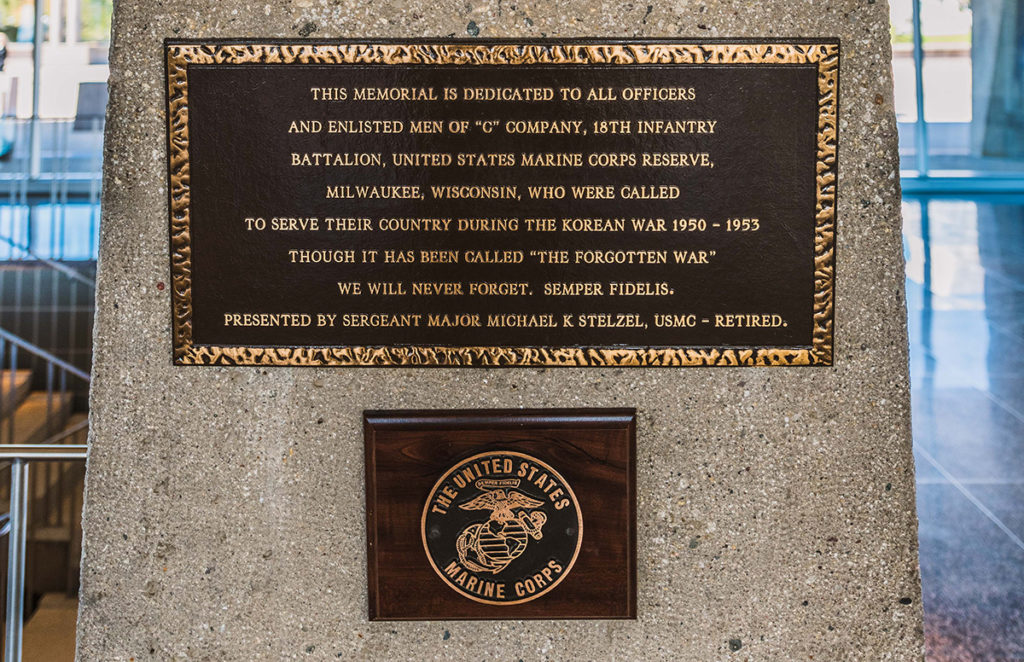
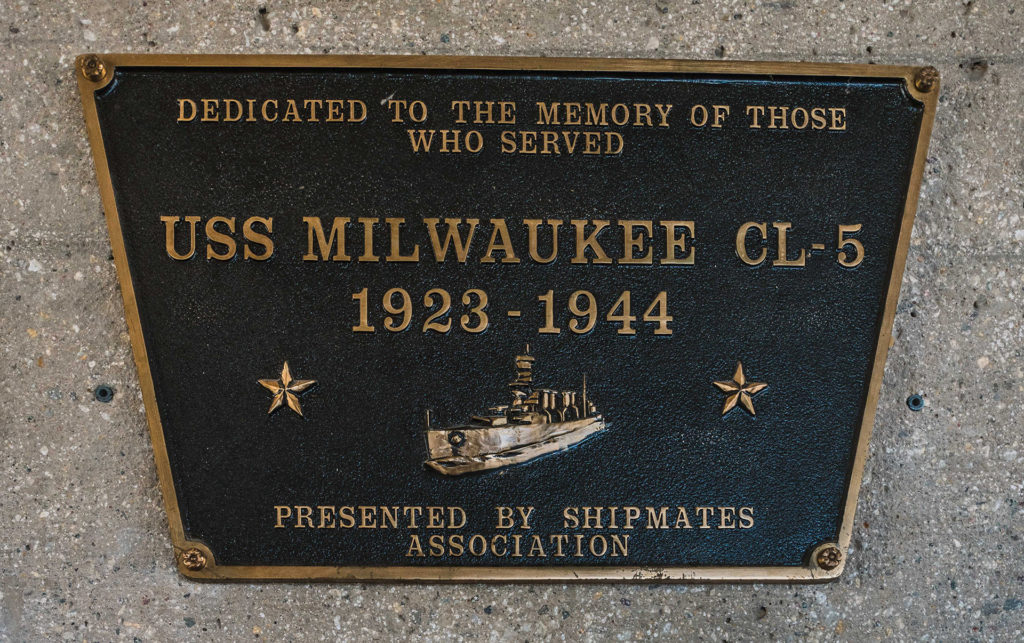
Dedicated to the memory of those who served on the ship from 1923 to 1944. The USS Milwaukee was an Omaha-class light cruiser built for the United States Navy during the 1920s. It was the third ship to be named after Milwaukee. The ship spent most of her early career assigned to the Asiatic and Battle Fleets. In 1941 she was assigned to the Neutrality Patrol until she was refitted in New York in late 1941. The USS Milwaukee escorted a troop convoy to the Pacific in early 1942 before returning to the South Atlantic where she patrolled for German commerce raiders and blockade runners. In 1944 she was temporarily transferred to the Soviet Navy and commissioned as Murmansk. The ship was returned by the Soviets in 1949.
The first USS Milwaukee was a monitor (ironclad), which was sunk in 1865. The fifth and final USS Milwaukee, a littoral combat ship, was built in Marinette, Wisconsin, and was commissioned in Milwaukee’s Veterans Park in November 2015. The bell from the second USS Milwaukee is on display at the top of the stairs on the 4th floor. Learn more about all five USS Milwaukee ships in the display in the east hallway of the 4th floor of the War Memorial Center.
